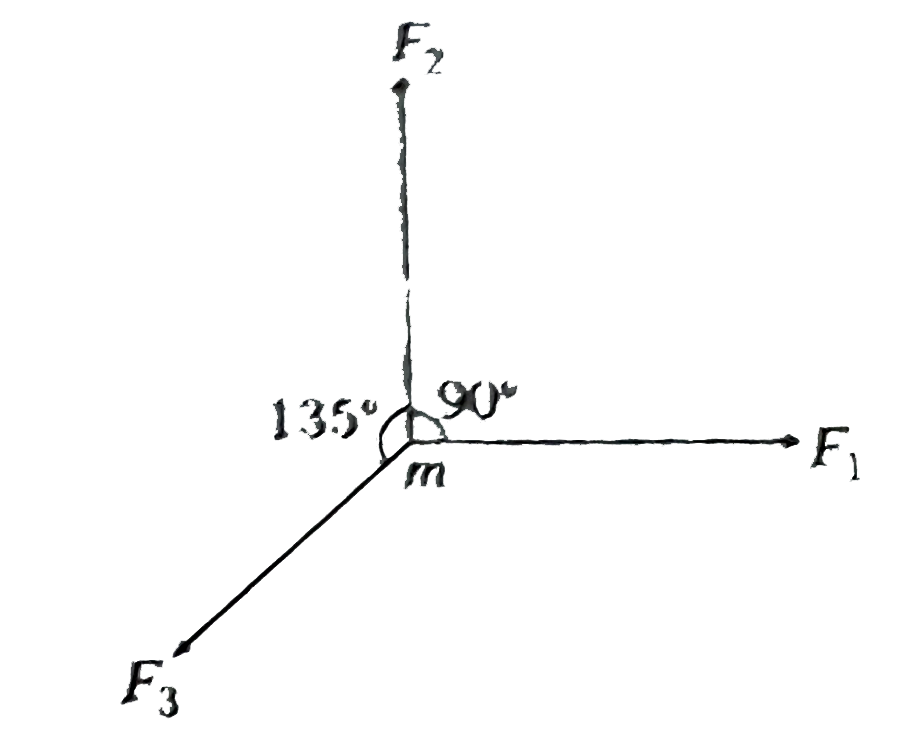When a force of 1N acts on a body of mass 1 gram, the body receives an acceleration of
1ms−2
9.8ms−2
980ms−2
1000ms−2
The correct Answer is:D
To find the acceleration of a body when a force acts on it, we can use Newton's second law of motion, which states that:
F=m⋅a
Where:
- F is the force applied,
- m is the mass of the body,
- a is the acceleration produced.
Step 1: Identify the given values.
- Force F=1N
- Mass m=1g
Step 2: Convert the mass from grams to kilograms.
Since the SI unit of mass is kilograms, we need to convert grams to kilograms:
1g=1×10−3kg
Step 3: Use the formula for acceleration.
Rearranging Newton's second law to solve for acceleration a:
a=Fm
Step 4: Substitute the values into the formula.
Now, substitute F=1N and m=1×10−3kg into the equation:
a=1N1×10−3kg
Step 5: Calculate the acceleration.
Since 1N=1kg⋅m/s2, we can rewrite the equation as:
a=1kg⋅m/s21×10−3kg
Now, the kilograms cancel out:
a=11×10−3m/s2
a=1000m/s2
Final Answer:
The acceleration of the body is 1000m/s2.
---
- F is the force applied,
- m is the mass of the body,
- a is the acceleration produced.
- Force F=1N
- Mass m=1g
Since the SI unit of mass is kilograms, we need to convert grams to kilograms:
1g=1×10−3kg
Rearranging Newton's second law to solve for acceleration a:
a=Fm
Now, substitute F=1N and m=1×10−3kg into the equation:
a=1N1×10−3kg
Since 1N=1kg⋅m/s2, we can rewrite the equation as:
a=1kg⋅m/s21×10−3kg
a=11×10−3m/s2
a=1000m/s2
The acceleration of the body is 1000m/s2.
Topper's Solved these Questions
- MISCELLANEOUS QUESTIONSBook:MCGROW HILL PUBLICATIONChapter:MISCELLANEOUS QUESTIONSExercise:PART-B
Explore 99 Videos
- MEASUREMENTBook:MCGROW HILL PUBLICATIONChapter:MEASUREMENTExercise:ELEMENTARY QUESTIONS (HIGHER ORDER THINKING QUESTIONS)
Explore 13 Videos
- MOTIONBook:MCGROW HILL PUBLICATIONChapter:MOTIONExercise:HIGHER ORDER THINKING QUESTIONS
Explore 48 Videos
Similar Questions
Find the intensity of gravitational field when a force of 100 N acts on a body of mass 10 kg in the gravitational field.
View SolutionWhen only a force F1 acts on a body of mass 3 kg, it accelerates in north east direction with an acceleration of √2m/s2. When only a force F2 acts on it accelerates in south east direction with an acceleration of √2m/s2. What force F3 (in N) should act on body along with F1 and F2 so that the body is in equilibrium.
View Solution
Knowledge Check
When a force F acts on a body of mass m, the acceleration produced in the body is a. If three equal forces F1=F2=F3=F act on the same body as shown in figure the acceleration produced is
 A(√2−1)aB(√2+1)C√2Da
A(√2−1)aB(√2+1)C√2DaTwo forces 25 N and 16 N act on a body of mass 1.0 kg. the minimum acceleration will be
A25ms−2B16ms−2C9ms−2D41ms−2When a force F acs on a body of mass m the acceleration product in the body is a . If htree equal forces F1=F2=F3=F act on the same body as shown in figure the accleration produced is
 A(√2−1)aB(√2+1)aC√2aDa
A(√2−1)aB(√2+1)aC√2aDa
When a force F acs on a body of mass m the acceleration product in the body is a . If htree equal forces F1=F2=F3=F act on the same body as shown in figure the accleration produced is

View SolutionIf a consant force acts on a body of mass m, then the body will have uniform
View SolutionTwo forces 25 N and 16 N act on a body of mass 1.0 kg. The minimum acceleration will be
View SolutionTwo forces 25 N and 16 N act on a body of mass 1.0 kg. The minimum acceleration will be
View SolutionTwo forces 25 n and 16 N act on a body of mass 1.0 kg . The minimum acceleration will be
View Solution
